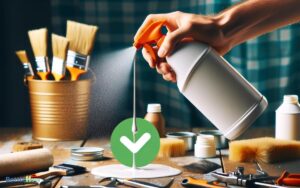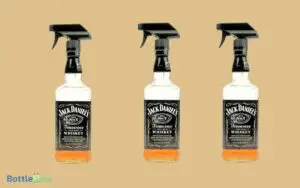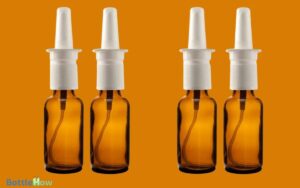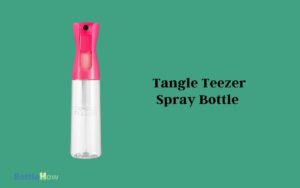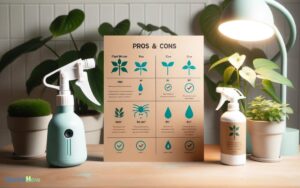Can I Put Isopropyl Alcohol in a Spray Bottle? Yes!
Yes, you can put isopropyl alcohol in a spray bottle, but you need to make sure it’s made of materials like HDPE or PP, which are resistant to the solvent’s effects.
For safety, select a bottle that maintains the integrity of a 70% alcohol solution. Verify the spray mechanism isn’t prone to corrosion by alcohol exposure.
Store the filled spray bottle in a cool, well-ventilated area away from heat sources to prevent degradation or pressure build-up inside the container.
Proper material selection and storage are essential for maintaining safety and effectiveness. Expanding your knowledge on usage provides further benefits and precautions.
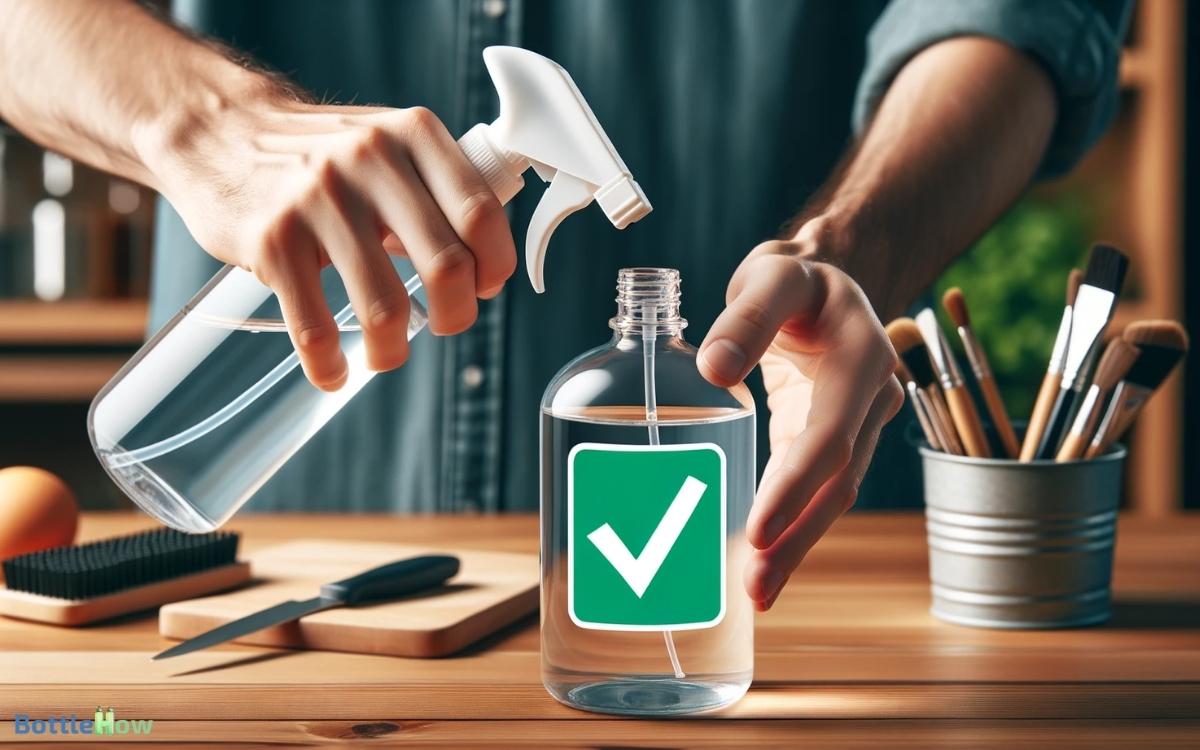
Key Takeaways
Understanding Isopropyl Alcohol
Isopropyl alcohol, often referred to as IPA, is a colorless, flammable chemical compound with strong antiseptic properties. You’ll find it invaluable in disinfecting and sanitizing surfaces or skin, particularly in healthcare settings.
IPA is miscible with water and dissolves both lipophilic and hydrophilic substances, making it exceptionally versatile for cleaning tasks.
However, it’s paramount to handle IPA with care due to its high volatility and flammability. It should be stored in well-ventilated areas away from heat sources or open flames.
Exposure should be minimized; always use it in well-ventilated spaces and avoid prolonged inhalation.
Concentrations typically range from 70% for antiseptic applications to 99% for technical uses, emphasizing its adaptability across different needs.
Choosing the Right Spray Bottle
Selecting an appropriate spray bottle for isopropyl alcohol demands careful consideration of material compatibility and durability to guarantee safety and effectiveness.
You’ll need to choose a bottle that can withstand the solvent nature of alcohol without degrading. Look for bottles specifically labeled as resistant to alcohols and solvents.
These are often made from materials like high-density polyethylene (HDPE) or polypropylene (PP), which are known for their resistance to chemicals and physical durability.
Ensure the spray mechanism itself is also compatible with isopropyl alcohol. Opt for components that don’t corrode or deteriorate when exposed to alcohol-based solutions.
This careful selection will help you maintain the integrity of the solution and provide safe, effective dispensation in serving your needs.
Effects on Plastic and Metal
When exposed to isopropyl alcohol, certain plastics and metals may degrade or corrode, compromising both the structure and the integrity of the container.
You must make sure that the spray bottle you’re using is resistant to the solvency effects of isopropyl alcohol, typically marked as HDPE (High-Density Polyethylene) or PET (Polyethylene Terephthalate). These materials maintain robustness without leaching harmful chemicals over time.
Metals like aluminum might react negatively, potentially contaminating the alcohol solution. This reaction not only risks your safety but also the effectiveness of the solution. Always verify the material specifications of the spray bottle.
For your safety and the protection of those you aim to serve, choosing the correct container is vital.
Ideal Concentrations for Disinfection
After confirming that your spray bottle is made of safe material, it’s important to focus on using the right concentration of isopropyl alcohol for effective disinfection.
For general sanitizing, a 70% concentration is ideal. This percentage balances efficacy with safety, effectively killing pathogens including viruses and bacteria on surfaces.
It’s vital to maintain this concentration; higher percentages evaporate too quickly and might be less effective against certain types of microorganisms.
When using this concentration, always make sure the area is well-ventilated. Avoid spraying near open flames or heat sources, as isopropyl alcohol is highly flammable.
By adhering to these guidelines, you’ll maximize safety and effectiveness, ensuring a safer environment for everyone you’re aiming to protect.
Preparing the Solution
How do you properly prepare a 70% isopropyl alcohol solution for effective disinfection? Crafting this solution involves precise measurements and careful mixing to guarantee safety and efficacy.
Follow these steps to prepare your disinfectant:
- Measure the Alcohol: Pour 700 milliliters of 99% isopropyl alcohol into a clean container. This high concentration is important for dilution accuracy.
- Add Water: Slowly add 300 milliliters of distilled water to the alcohol. Using distilled water is necessary to prevent contaminants that could interfere with the disinfecting properties.
- Mix Thoroughly: Stir the mixture gently to ensure a uniform solution. This step is crucial for achieving the desired 70% concentration, which is effective yet safe for most disinfecting purposes.
Always use dedicated measuring tools and containers to maintain purity throughout the process.
Safety Precautions
When storing isopropyl alcohol in a spray bottle, make sure it’s kept in a cool, dry area away from direct sunlight and heat sources to prevent degradation and potential hazards.
It’s important that you maintain adequate ventilation in the area where the alcohol is sprayed to avoid inhalation risks and reduce flammable vapors.
Always use gloves and eye protection when handling isopropyl alcohol to prevent skin and eye irritation.
Proper Storage Guidelines
Make sure you store isopropyl alcohol in a cool, well-ventilated area away from direct sunlight and heat sources to minimize the risk of fire.
Here are important guidelines you should follow for safe storage:
- Temperature Control: Keep the storage temperature below 77°F (25°C) to prevent vapor pressure build-up.
- Container Specifications: Use only containers designed for chemical storage, preferably those made of polyethylene or glass that are well-sealed.
- Labeling and Organization: Clearly label each container with its contents and the date of storage. Organize the storage area to ensure that isopropyl alcohol is easily accessible in case of use or emergency without obstructing exits.
Ventilation Requirements
Ensuring proper ventilation is essential when storing isopropyl alcohol, as it prevents the accumulation of flammable vapors.
When you’re setting up storage, make sure the area is equipped with ventilation that meets the minimum airflow rate of 0.5 cubic meters per minute per square meter of room area. This specification helps dilute vapors to safe levels.
It’s important to check that exhaust fans and air intakes are functioning correctly and are free from blockages.
Regular maintenance of these systems is critical to safeguard their efficiency. Installing gas detectors can also enhance safety by providing early warnings of high vapor concentrations.
Always adhere to local regulations and standards to ensure you provide a secure environment, prioritizing the well-being of everyone involved.
Handling and Usage Tips
Handling isopropyl alcohol requires wearing protective gear, including gloves and goggles, to prevent skin and eye irritation.
Here are additional safety measures to make sure you’re safely serving those who depend on clean environments:
- Use in Well-Ventilated Areas: Isopropyl alcohol vapors can be irritating and harmful. Always use it in areas with adequate airflow to disperse the fumes effectively.
- Store Securely: Keep your isopropyl alcohol in a cool, dry place away from heat sources and direct sunlight. Make certain the container is tightly sealed to prevent leakage and evaporation.
- Label Clearly: Accurate labeling on your spray bottle is essential. It helps prevent misuse or accidental ingestion, particularly in settings where you’re responsible for the well-being of others.
Effective Spraying Techniques
To achieve uniform distribution, you should adjust the nozzle for a fine mist and hold the spray bottle approximately 20-25 centimeters from the target surface.
This distance guarantees that the isopropyl alcohol covers the area evenly without oversaturation, which can lead to unnecessary waste and potential damage to sensitive materials.
Always make sure your movements are steady and controlled; spray in a sweeping motion to maintain consistent coverage.
It’s critical to wear protective gloves and maintain proper ventilation during application to avoid inhalation of vapors or skin contact.
Storage and Stability
After mastering the application technique, it’s important to focus on how you store isopropyl alcohol to maintain its efficacy and safety.
Proper storage not only extends the shelf life of isopropyl alcohol but also prevents any hazardous incidents.
Here are key storage guidelines:
- Temperature Control: Store at a consistent temperature, ideally between 15°C and 30°C. Avoid areas where temperature fluctuations are common, as this can degrade the alcohol.
- Light Exposure: Keep the container in a dark place. Exposure to direct sunlight or UV light can lead to the breakdown of isopropyl alcohol, reducing its effectiveness.
- Container Material: Use airtight containers made of materials resistant to alcohol, such as glass or HDPE, to prevent evaporation and contamination.
Common Mistakes to Avoid
When filling your spray bottle with isopropyl alcohol, make sure you don’t overfill it to prevent leakage and potential hazards.
It’s important to avoid using bottles that previously contained other chemicals, as residual substances could react with the alcohol. Make sure the spray bottle is labeled correctly to avoid accidental misuse. Additionally, always clean and dry the bottle thoroughly before filling it with alcohol to ensure safety. If you’re wondering, can I bring an empty spray bottle while traveling, it’s best to check airline regulations, as restrictions may vary. Proper storage and handling will help prevent leaks and accidental exposure.
Here’s a table highlighting key mistakes to avoid:
| Mistake | Consequence | Prevention Strategy |
|---|---|---|
| Overfilling | Leakage and exposure risk | Fill to 80% capacity only |
| Incorrect labeling | Accidental misuse | Label bottles with contents and hazards |
| Using non-compatible bottles | Chemical reactions and container breakdown | Use only alcohol-resistant materials |
Stick to these guidelines to ensure safety and effectiveness when handling isopropyl alcohol.
Benefits of Alcohol Disinfection
Isopropyl alcohol effectively eliminates 99.9% of germs and bacteria, making it a powerful disinfectant for various surfaces.
When you’re aiming to maintain a safe environment, whether at home or in a healthcare setting, understanding the benefits of alcohol disinfection is essential.
Here’s why isopropyl alcohol is a top choice:
- Rapid Action: It acts quickly, typically disinfecting surfaces within 30 seconds to one minute, reducing downtime in busy settings.
- Evaporation Rate: Leaves no residue as it evaporates completely, ensuring that surfaces don’t attract dirt and remain clean longer.
- Safety Profile: With appropriate use—concentrations of 70% being ideal—it’s safe for most surfaces, minimizing risk of damage while providing effective disinfection.
Always use it in well-ventilated areas and follow safety guidelines to protect your health.
Alternatives to Isopropyl Alcohol
While isopropyl alcohol is a popular disinfectant, you should also consider alternatives like ethanol or hydrogen peroxide, which offer effective germicidal properties suitable for various applications.
Ethanol, particularly at concentrations of 70-90%, is highly effective in killing bacteria and viruses when used for surface disinfection. Make sure it’s applied for at least 30 seconds to achieve maximum efficacy.
Hydrogen peroxide, another robust alternative, should be utilized at a 3% concentration for general disinfection purposes.
It requires a longer contact time of around 10 minutes to effectively destroy pathogens but is advantageous for its lack of volatile organic compounds, making it safer for the environment.
Always use these alternatives with caution, adhering to proper dilution ratios and safety guidelines to protect yourself and others.
Conclusion
To sum up, when wielding the versatile sword of isopropyl alcohol for disinfection, choose your arsenal wisely.
Opt for HDPE or glass spray bottles to avoid degradation. Aim for a 70% concentration for the most effective germ-slaying power.
Always dilute precisely, store in a cool, dark place, and avoid common pitfalls like over-dilution. Remember, while alcohol is a powerful ally in hygiene, alternatives like hydrogen peroxide can also fortify your defense against microbes.
Stay informed, stay safe.

